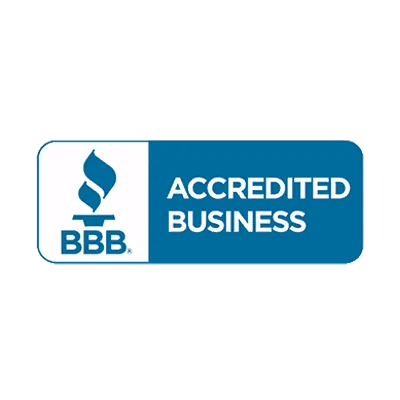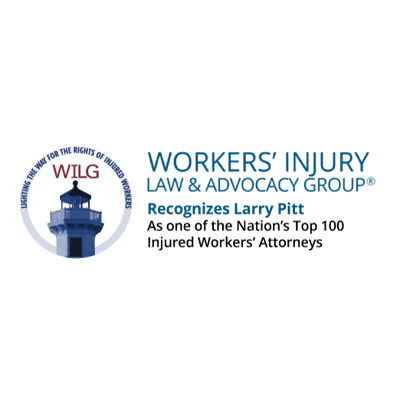Recovering
$ MILLIONS
For Injured Workers
Asphyxiation
Asphyxiation hazards exist in various workplaces throughout Pennsylvania. Workers who are exposed to asphyxiants, toxic gases, and other dangerous conditions may suffer serious injuries and illnesses. If you were harmed or lost a loved one due to asphyxiation in the workplace, a Philadelphia workers’ compensation lawyer at Larry Pitt & Associates, P.C. can help you file a successful claim for benefits.
Asphyxiations often occur in confined spaces with oxygen-deficient, toxic, or combustible atmospheres. When workers are exposed to atmospheric hazards in confined spaces, they are at-risk of being asphyxiated or sustaining other injuries.
GET A FREE CONSULTATION WITH LARRY PITT
Philadelphia Workers’ Compensation Lawyers at Larry Pitt & Associates, P.C. Advocate for Those Harmed by Asphyxiation in the Workplace
If you were injured or you lost a loved one due to asphyxiation in the workplace, contact a Philadelphia workers’ compensation lawyer at Larry Pitt & Associates, P.C. Our skilled and knowledgeable attorneys are dedicated to helping workers obtain the benefits they are entitled. With over 40 years of experience, we understand what it takes to file a successful claim for compensation. For a free consultation, contact us online or call us at 888-PITT-LAW. Larry Pitt & Associates helps throughout:
What is a Confined Space?
According to the Occupational Safety and Health Administration (OSHA), a confined space is one that is large enough for an employee to enter and perform assigned work, has limited means for entry or exit, and is not designed for continuous employee occupancy. Some of the most common types of occupational confined spaces include:
- Boilers
- Ducts
- Grain silos
- Holding tanks
- Manholes
- Manure pits
- Mine tunnels
- Pipelines
- Reaction vessels
- Septic tanks/ Sewage digesters/ sewage distribution systems
- Utility vaults
- Vats
Confined Space Hazards
Confined spaces may be present in any type of work environment; therefore, it is important to be aware of the hazards associated with them. A hazardous atmosphere is present when an employee is at risk of death, incapacitation, injury, acute illness, or the inability to escape unaided due to dangerous:
- Flammable gases, vapors, mists, airborne combustible dust, or other toxic and hazardous substances
- Concentrations of airborne combustible dust
- Atmospheric oxygen concentrations, either too low or too high
Asphyxiation is categorized by a deficiency of oxygen and an excess of carbon dioxide in the body. It can happen as a result of inhaling a toxic or asphyxiant gas in a confined space. Those who were injured by toxic or asphyxiant gases in the workplace may need an attorney to assist them in filing a claim for benefits; the Philadelphia workers’ compensation lawyers at Larry Pitt & Associates, P.C. are available to guide you through every step of the process.
Dangerous Gases in Work Environments
There are two main types of dangerous gases that can cause employees to become sick or injured while working in confined spaces: toxic and asphyxiant. Toxic gases are those that cause direct damage to the respiratory system, tissues, and central nervous system, whereas asphyxiant gases are those that are nontoxic or minimally toxic. However, because the asphyxiant gas reduces or displaces oxygen levels when breathing air, it can lead to death. Some common types of dangerous gases include:
- Nitrogen: Often referred to as the silent killer, nitrogen can cause workers to become asphyxiated when its levels in a confined space are too high. It is an odorless, colorless gas that typically goes undetected until it is too late.
- Carbon monoxide: This other odorless, colorless gas can poison those who breathe it in. Carbon monoxide fumes are released from internal combustion engines in vehicles, heavy equipment, gas ranges, and furnaces.
- Hydrogen sulfide: This type of gas, often used in factories, wastewater treatment, and landfills, has a strong odor often described as rotten eggs. Exposure to hydrogen sulfide can produce various negative health effects, depending on the level and circumstances of exposure.
Any time oxygen levels fall below 21 percent, workers are at risk of asphyxiation. Other dangerous gases that can reduce oxygen levels and lead to toxic chemical asphyxia include:
- Argon
- Butane
- Carbon Monoxide
- Cyanide
- Helium
- Hexafluoride
- Methane
- Neon
- Propane
- Sulfur
High-Risk Occupations
Certain workers are at higher risk for asphyxia-related injuries and illnesses than others due to the nature of their job, namely those who work in confined spaces and handle toxic chemicals. Workers our lawyers represented include:
- Aerospace workers
- Agricultural workers/farmers
- Chemical plant workers
- Coal miners
- Construction workers
- Firefighters
- Mechanics
- Oil and gas workers
- Painters
- Sanitation workers
- Warehouse workers
- Welders
Asphyxiation Injuries
Workers may suffer injuries varying in severity depending on the circumstances of their exposure, such as the type of asphyxiant involved and the length of exposure. Common types of asphyxiation injuries include:
- Arrhythmia, including bradycardia and tachycardia
- Brain damage
- Coma
- Confusion
- Crushing injuries
- Convulsions
- Death
- Dizziness
- Fainting
- Headache
- Hemorrhages
- Loss of coordination
- Nausea
- Shortness of breath
- Weakness
Traumatic Asphyxia
Workers may also be asphyxiated due to physical trauma. Traumatic asphyxia is a complication associated with crush injuries to the chest and abdomen. It happens as a result of sudden or severe compression of the thorax and/or the upper abdomen. Workers in the industrial industry are at an increased risk for this type of injury due to their frequent encounters with vehicles and heavy equipment. Symptoms of traumatic asphyxia include facial and upper chest petechiae, subconjunctival hemorrhages, cervical cyanosis, and neurological damage.
Preventing Work-Related Asphyxiation
Approximately 2.1 million workers enter permitted confined spaces each year, according to OSHA. Sadly, the Bureau of Labor Statistics (BLS) reports that 166 workers were killed in confined space incidents in 2017, a 15 percent increase from the previous year. Many of these deaths can be prevented by taking several precautions.
Effective control measures for confined space hazards include:
- Proper ventilation: Sufficient ventilation is critical for safeguarding workers against asphyxiation. Natural, mechanical, or local exhaust ventilation methods can move fresh air into, and contaminated air out of, confined workspaces.
- Thorough inspection and maintenance: Employers should regularly check all containers housing dangerous gases for leaks and other damage. The confined space itself should also be examined for hazards, such as inadequate lighting, extreme temperatures, and high concentrations of dust or other hazardous substances.
- Employee training: OSHA cites lack of training and ability to recognize confined space hazards as one of the main causes of asphyxiation. Employers should educate employees on the hazards associated with confined spaces and train them on the appropriate protective and risk-mitigation measures.
- Personal Protective Equipment (PPE): Respirators protect workers against many hazards associated with confined spaces, such as insufficient oxygen, dangerous gases, and toxic chemicals. Employers should select the type of respirator that is appropriate for the job and regularly check the apparatuses for an acceptable fit.
- Rescue and emergency services: According to the National Institute for Occupational Safety and Health (NIOSH), rescuers comprise approximately 60 percent of confined space fatalities. Employers should provide adequate equipment for rescues and ensure that they can be conducted in a timely manner.
- Securing equipment: OSHA has standards pertaining to fall and falling object protection. Employers have a duty to protect workers from traumatic asphyxiation in confined spaces by providing the appropriate safeguards, such as covers, guardrail systems, and barricades.
- Control of hazardous energy: Confined spaces often present hazards associated with the uncontrolled release of energy, such as electricity, mechanical energy, and high-pressure fluids and gasses. Employers are required to comply with the OSHA lockout/tagout standard pertaining to their operation.
OSHA Standards Pertaining to Confined Spaces
Under the General Duty Clause of the Pennsylvania Workers’ Compensation Act, employers have a duty to furnish places of employment that are free from recognized hazards that are likely to cause death or serious physical harm. Employers are also required to comply with the applicable OSHA standards, including those pertaining to confined spaces and hazard communication.
When employers do not comply with OSHA standards, workers may become injured or ill due to hazardous conditions in the workplace. Employees with work-related injuries or illnesses may be eligible for workers’ compensation benefits. The Philadelphia workers’ compensation lawyers at Larry Pitt & Associates, P.C. are dedicated to helping Pennsylvania employees receive the benefits they deserve.
Permit-Required Confined Spaces
According to OSHA, a permit-required confined space either contains:
- A hazardous atmosphere
- Material that could engulf entrants
- A configuration that could trap or asphyxiate entrants
- Other recognized safety or health hazards
The OSHA standard pertaining to confined spaces applies to all general industry places of employment. Employers must evaluate their workplace to determine if there are any permit-required confined spaces. If so, they must develop and implement a permit space program designed to protect employees from confined space hazards. Key elements that should be included in the program are:
- Entry is restricted to authorized persons
- Signs indicate that there is permit space
- Entry is regulated by a written program
- Permits are recorded and issued for each entry into the space
- Detailed procedures for atmospheric testing are established prior to entry
- Outside monitoring is done by an attendant
- Training requirements and specific duties are assigned to all employees
- Recue provisions, including a non-entry retrieval system, is in place
Alternative Entry
In certain cases, employers may use alternative entry procedures, which are less stringent than full permit procedures. Employers must demonstrate that the hazardous or potentially hazardous atmosphere may be made safe by using continuous forced air ventilation. The internal atmosphere must still be tested, but employers may be exempt from permit and attendant requirements.
Permissible Exposure Limit (PEL)
OSHA has established permissible exposure limits for toxic and hazardous substances in the workplace. Employers must conduct atmospheric testing to ensure that chemical concentrations in the air do not exceed the limit. There is an annotated table that lays out occupational exposure limits for certain substances, which employers may reference.
Respiratory Hazard Evaluation
Employees who are exposed to respiratory hazards should wear the appropriate respiratory protection equipment. Employers must make reasonable estimates of employee exposures when selecting respirators. Based on the exposure assessment, a respiratory protection program should be developed and implemented in the workplace.
Hazard Communication Standard
Employers must label hazardous chemicals in the workplace and provide safety data sheets for exposed workers. Under the OSHA standard, labels for each hazard class and category must include a signal word, pictogram, and a hazard and precautionary statement. Employees must also be trained on how to handle chemicals appropriately.
Compensation for Workplace Asphyxiation
Pennsylvania workers who suffer injuries from asphyxiation may be entitled to workers’ compensation benefits. Under the Pennsylvania Workers’ Compensation Act, employees must notify their employer within 120 days to remain eligible for benefits. Under the no-fault system, employees may recover various benefits, including:
- Medical benefits
- Wage loss benefits
- Specific loss benefits
- Death benefits
Pennsylvania Death Benefits
Families of workers who died from asphyxiation in the workplace may be able to collect death benefits. Eligible dependents, including the surviving spouse and children, will receive payments based on the decedent’s pre-injury average weekly wage. The deceased worker’s family members may also receive up to $3,000 for burial and funeral expenses.
What Our Clients Say













